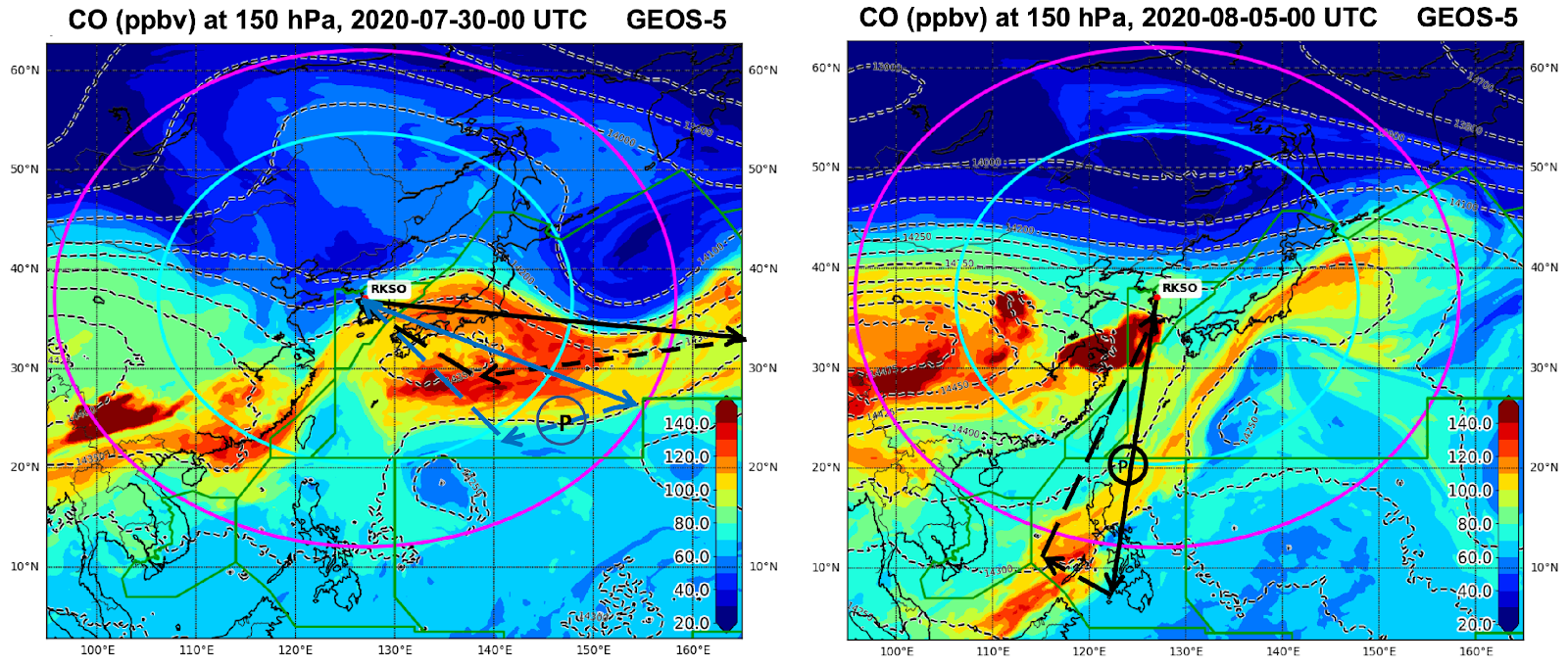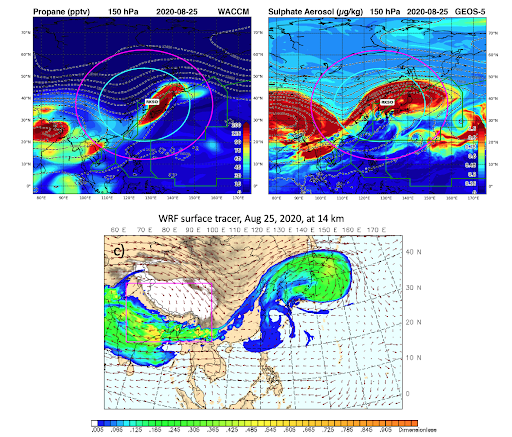Progress in Asian Summer Monsoon Chemical and Climate Impact Project (ACCLIP)
The Asian summer monsoon Chemical and Climate Impact Project (ACCLIP) centers on a field campaign using two high altitude research aircraft, the NSF/NCAR Gulfstream V (GV) and the NASA WB-57, to investigate the impact of Asian monsoon transport on the upper tropospheric and lower stratospheric (UTLS) chemical composition over the western Pacific (see ACOM annual report 2019 https://nar.ucar.edu/2019/acom/asian-summer-monsoon-chemical-and-climate-impact-project-acclip). The airborne field campaign, originally planned for 2020, is postponed to 2021 due to the COVID-19 Pandemic. Despite the difficulties from the pandemic, major progresses have been achieved in 2020.
Due to pandemic-induced uncertainties, the project changed its operations base from Okinawa, Japan to Osan, South Korea. The science team conducted an intense forecasting “dry run” during July-August, 2020, the originally scheduled campaign period. The results show that the Osan base is well situated for the flights targeting air masses transported from the region of deep monsoon convective lifting via eastward eddy shedding. The multi-model results also provide excellent support to the campaign hypotheses.
Flight operation from the Osan base is demonstrated using two notional GV flight plans made during the dry run (Figure 1). In the figure, the enhanced carbon monoxide (CO) indicates air masses lofted from the polluted boundary layer by the monsoon’s deep convection which are subsequently transported over the western Pacific. The GV flights from the Osan base show the capability of sampling the eastward spreading of the air mass (July 30) and the transport following anticyclonic flow to low latitudes (August 5).
One of the key campaign hypotheses states that the UTLS over the western north Pacific is a significant pathway for the monsoon uplifted boundary layer pollutants to enter the global UTLS. The multi-model forecast results during the dry run provide strong support for this hypothesis. Figure 2 shows a transport event on August 25, 2020. Significant enhancements of propane (C3H8), a non-methane hydrocarbon with strong source from the oil-gas industry, and sulphate aerosol (SO4) are forecasted in the campaign domain. Figure 2c shows an idealized surface tracer forecast from the WRF-chem model, designed to represent emissions from the Southern Tibetan Plateau and Northern India (region shown by the magenta box), which is identified as an efficient monsoon convective lofting region from a number of studies (Bergman et al., 2013; Pan et al., 2016; Honomichl & Pan 2020). The surface tracer distribution at the 14 km level indicates that these polluted air masses were transported from this region by deep convection and reached the campaign domain by large-scale shedding in approximately three days, supporting the key hypothesis.

Figure 1. Notional flight plans for the GV research aircraft from Osan base, S. Korea, during 2020 ACCLIP forecast dry run. The color background shows forecasted upper tropospheric (150 hPa level) carbon monoxide mixing ratio for July 30 and August 5, 2020. Planned flight tracks are shown in black and blue lines. The magenta and light blue rings indicate the nominal flight ranges of the GV and WB-57, respectively.

Figure 2. Example of a transport event over the western Pacific on August 25, 2020, from three forecast models: NCAR WACCM, NASA GEOS-5 and NCAR WRF. a) Enhanced Propane (C3H8) from NCAR WACCM model forecast, b) Sulfate aerosol (SO4) from NASA GEOS-5 model forecast, and c) Distribution of an idealized surface tracer at 14 km from a WRF model forecast initialized three days earlier, designed to represent surface emission in Southern Tibetan Plateau and Northern India (region marked by magenta box).